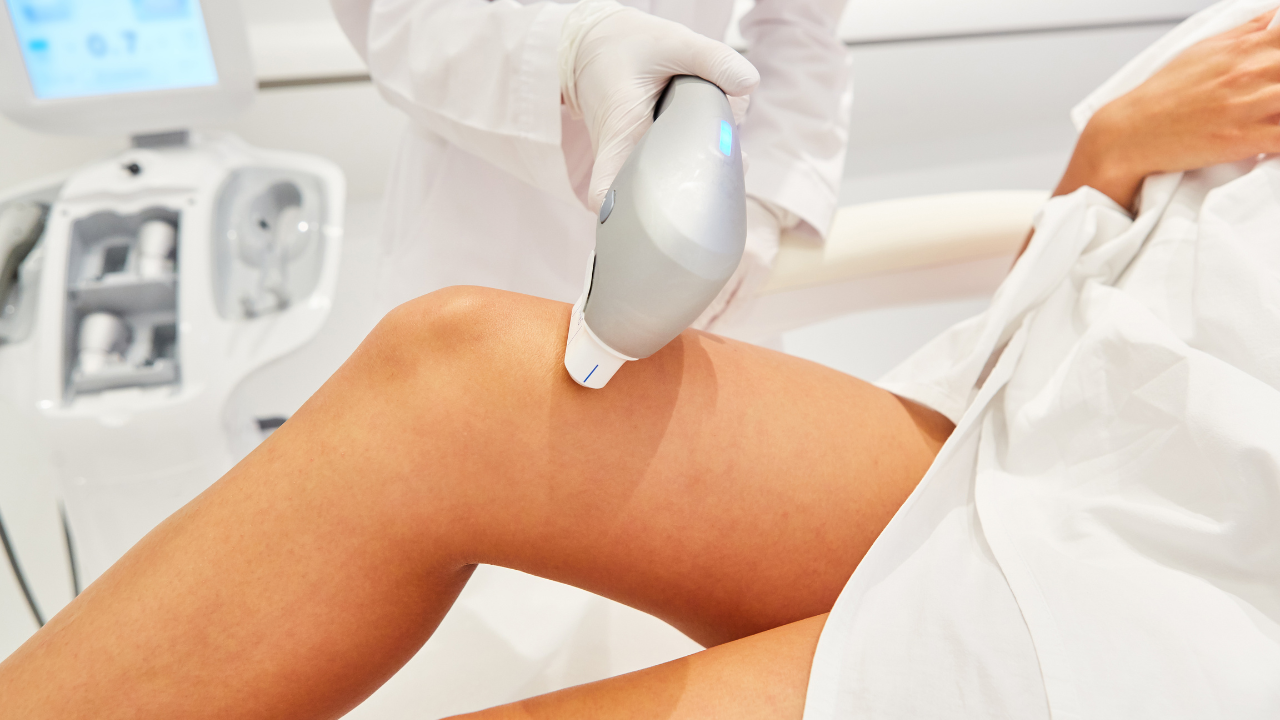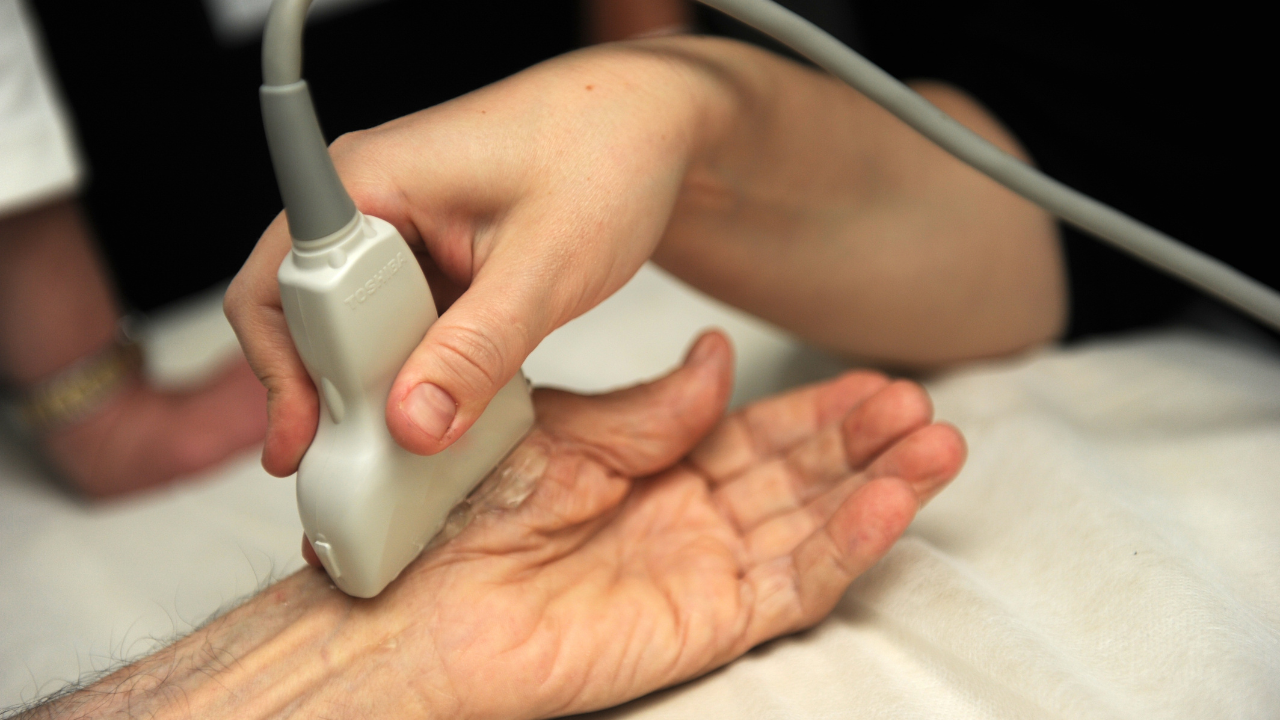What is Ultrasound Therapy in Physiotherapy?
By Nigel ChuaMost assume that physiotherapy treatment only consists of massage techniques and exercises, but that is simply not true!
As the medical world continues to advance, so do physiotherapy treatments. One such advancement is incorporating ultrasound waves into physical therapy.
This is known as ultrasound physiotherapy, a non-invasive and safe technique that has become integral to physiotherapy practices, helping countless patients recover from various musculoskeletal conditions.
In this article, we will provide ample knowledge of ultrasound therapy, its applications and the various types available in the field.
What is ultrasound therapy?
The primary goal of ultrasound therapy is to accelerate rapid soft tissue healing, increase blood flow, and relieve pain in targeted areas.
Ultrasound therapy, or therapeutic recovery ultrasound, involves using a therapeutic ultrasound machine that emits high-frequency sound waves beyond the range of human hearing on a targeted area of the patient's painful joint or body part.
These ultrasound waves penetrate the skin and are absorbed by the underlying tissues, including muscles, tendons, ligaments, and even deep within joints.
What types of therapeutic ultrasound are there?

Therapeutic ultrasound comes in various types, with each designed to target specific conditions and achieve different therapeutic goals.
Thermal ultrasound therapy
Also known as high-intensity continuous ultrasound therapy, it is a therapeutic ultrasound that involves the continuous emission of high-frequency sound waves to produce a deep heating effect in the targeted tissues.
This ultrasound therapy approach is commonly used in physiotherapy and rehabilitation settings to promote tissue healing, increase blood flow, and alleviate pain in various musculoskeletal conditions, such as back pains, elbow injuries, knee sprains and more.
Pulsed Ultrasound Therapy
For pulsed ultrasound therapy, we specifically change to an intermittent pulsing ultrasound for the session.
Pulsed ultrasound is primarily used to reduce inflammation, making it suitable for acute injuries and conditions characterized by swelling and pain.
Low-Intensity Pulsed Ultrasound Therapy
This form of therapeutic ultrasound uses a lowered-power setting to stimulate tissue repair and cellular activity. It is commonly used for wound healing, bone fractures, and superficial soft tissue injuries.
The low intensity ensures minimal heating, making it safe for more delicate or sensitive areas while still experiencing the healing capability of ultrasound waves therapy.
How is ultrasound treatment administered?
First, we need to assess to determine if ultrasound therapy treatment is suitable for the patient's injury and consider other factors, too, such as age and medical conditions.
When we determine that therapeutic ultrasound will be beneficial, we then help the patient get comfortable.
This might look like getting the patient to lie down on a plinth or sitting with specific body parts out (e.g. placing the leg on the plinth for easier access to the knee). We will also position the patient with towels so that they are more supported and comfortable.
Then, we apply ultrasound conduction gel to improve the transmission of therapeutic sound waves from the ultrasound machine via the ultrasound machine transducer, a handheld device.
Specific, prescribed healing sound waves are sent deep in a consistent or pulsating pattern into the tissues when the transducer is rotated circularly over the injured area. Light heat is produced as the sound waves pass through the tissues, increasing blood flow in the area.
This increases blood flow and brings oxygen and essential nutrients to the injured tissues, removing waste products and promoting faster healing.
Moreover, ultrasound therapy can also break down scar tissue and adhesions, improving tissue flexibility and range of motion, helping patients move, walk or do things as they normally do again without restrictions of pain or stiffness.
Common Applications of Ultrasound Therapy

Here are some of the areas that therapeutic ultrasound can be applied to:
Soft Tissues
Ultrasound therapy is particularly beneficial in treating soft tissue injuries, such as muscle, ligament or tendon sprains, strains, and contusions.
The sound waves help reduce inflammation and accelerate the healing process, decreasing pain and increasing movement, enabling patients to recover more quickly.
Joint Conditions
Patients with osteoarthritis or rheumatoid arthritis report decreased joint stiffness, improved joint movement and function, and decreased pain.
More importantly, they were also able to do things that they couldn't do for a long time because arthritis either caused too much pain or stiffness that held them back before.
Scar Tissue Management
After surgeries or injuries, scar tissues that form can "stick" together in what we call adhesions. These scar adhesions will limit the ability of joints, tendons or structures from being able to move smoothly or without pain.
Carefully applying controlled prescribed ultrasound can help to break down the scar tissue, enhancing tissue flexibility and reducing pain associated with scar formation.
Bones
Fractures, bone bruising or bone contusions also can respond well to therapeutic ultrasound treatment.
Tendonitis and Tendinopathy
Achilles tendonitis, rotator cuff tendinopathy, tennis and golfer's elbow respond well to ultrasound therapy which decreases pain and inflammation in the affected tendons, promoting tendon tissue repair.
Take charge of your life with Phoenix Rehab Group!
At Phoenix Rehab, we go beyond just treating symptoms.
Our skilled multi-disciplinary team of principal physiotherapists, hand therapists and other healing professionals is here to prevent, assess, and treat various movement disorders caused by physical disabilities, sports injuries, or illnesses.
You can expect our professional and personalised treatments to relieve pain, improve muscle strength, enhance joint range and mobility, boost exercise tolerance, and even aid chronic disease management.
No matter your health or recovery goals, we are there every step of the way to ensure you receive dedicated and personalised treatment on your path to recovery.
Don't let pain and limitations hold you back any longer!
Book your appointment here >
Browse other articles by category
Physiotherapy for Knee Pain Physiotherapy For Slipped Disc Physiotherapy for Neck Pain PHYSIOTHERAPY
PHYSIOTHERAPY
 Hand Therapy
Hand Therapy
 Alternative
Alternative
 Massage
Massage
 Traditional Chinese Medicine Treatment
Traditional Chinese Medicine Treatment
 Rehab
Rehab
 Physiotherapy For Lower Back Pain
Physiotherapy For Shoulder Pain
Orthopedic Doctors, Insurance & Healthcare
Physiotherapy For Upper Back Pain
Frozen Shoulder
Physiotherapy for Back Pain
Physiotherapy For Lower Back Pain
Physiotherapy For Shoulder Pain
Orthopedic Doctors, Insurance & Healthcare
Physiotherapy For Upper Back Pain
Frozen Shoulder
Physiotherapy for Back Pain

 Whatsapp us now
Whatsapp us now